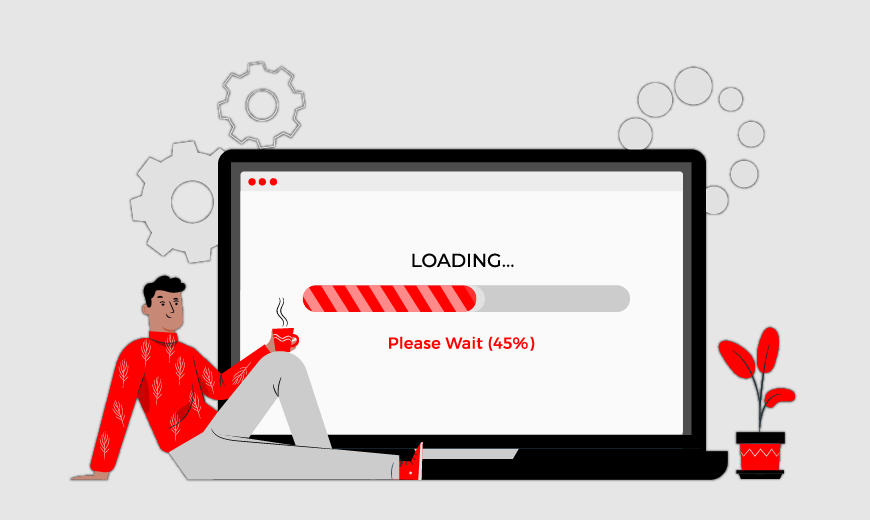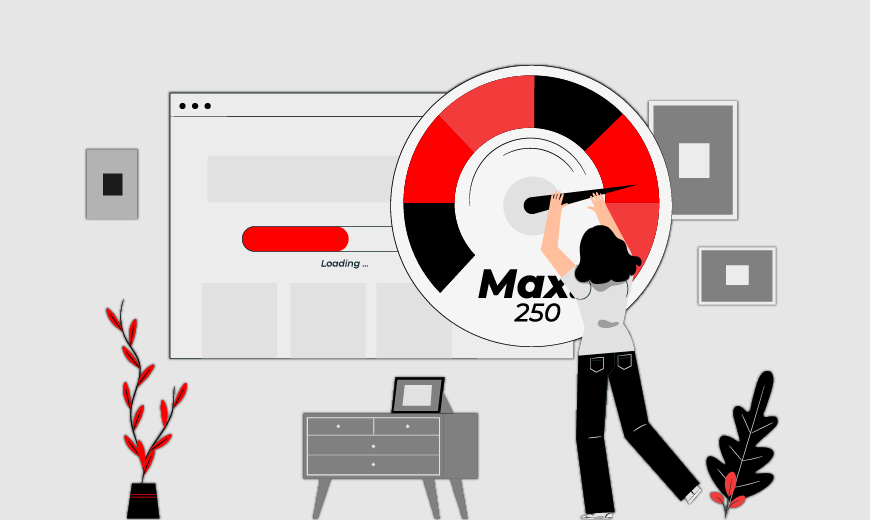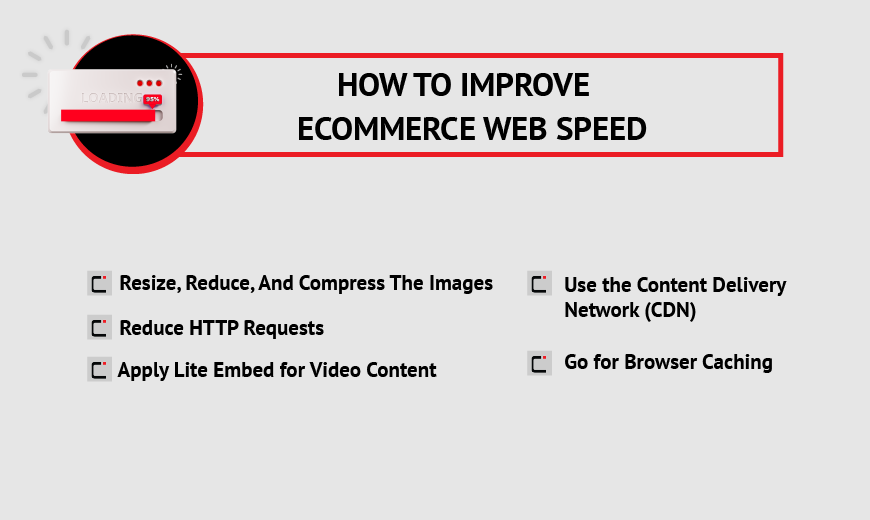In the fast-paced era of e-commerce, where attention spans are fleeting and user expectations are high, the load time of a website can make or break its success. With each passing second, potential customers teeter on the brink of engagement or abandonment, making the optimization of load times a paramount concern for online businesses. A swift-loading website not only enhances user experience but also directly correlates with improved conversion rates, search engine rankings, and overall customer satisfaction. Thus, understanding and implementing strategies to bolster website performance and achieve faster load times are indispensable pursuits for any e-commerce venture aiming to succeed in today’s digital marketplace.
There are several advantages to a website’s quick speed. Businesses may diagnose and identify several ways to improve the performance of e-commerce websites with faster load times if they are not functioning properly.
Effectiveness of Faster Load Time on Website Performance
- A B2C or e-commerce website that loads within 1 second has 2.5 times more conversion than a website that loads in 5 seconds. (captruly.com)
- 40% of the visitors on e-commerce sites won’t wait for more than 3 seconds before abandoning. (captruly.com)
- Websites that are shown on the first page after a search query, load in 1.96 seconds. It means better load time and better ranking in Google. (qeue-it.com)
- Shoppers on e-commerce sites visit almost 9 pages when the load time is 2 seconds, as compared to around 3.4 pages when the load time is 8 seconds. (qeue-it.com)
- For the retail site, a 0.1s improvement in load speed increased the conversion rate by almost 9%. (qeue-it.com)
The above-mentioned statistics show how important faster load time is for an e-commerce website. This should give businesses a hint of how they can improve their websites.
What is Load Time?
Well, before going for the strategies to improve or to get faster load time. Let’s first know what the load time is. So that businesses may be able to get the right strategy in place without harming the other components of an e-commerce website.

Simply saying the load time is the time elapsed when the user clicks your website link or inserts the URL in the search bar, till the entire page of the website becomes available for use.
What are the Factors that Affect Website Speed?
The important part of this process is to understand what are the factors affecting the load time of a business ecommerce website. Well, there are many, some of the important and common factors are as follows:
No Browser Caching
Browser caching operates in a way that it stores the most visited and requested items and pages on the browser. When someone searches for it on an ecommerce website it can load it faster. When there is no browser caching, it can take time to load the requested query, increasing the load time undermining the website performance.
More HTTP Requests
As we know, most e-commerce websites use HTTP protocol. It takes time to load the website to the browser because an HTTP request is sent to the server. The more usage of images, videos and other rich content on a website sends more HTTP requests to the server. This abundance of requests causes the load time to increase that affects the website performance negatively.
Server Response Time
Sometimes servers are slow to respond. These servers take time to respond to the client requested query increasing the load time of an e-commerce website. This can be due to slow servers, or due to the geographical location of the client.

When the content delivery network (CDN)is not used and all the burden of loading HTTP requests is on one server it turns the server slow and starts increasing the website load time.
Videos and Images
Videos and images are the main content of an e-commerce website. Whether these are product explainers, pictures of products from different angles, reviews from customers which contain videos and images. This type of rich content creates a lot of HTTP requests to the servers.
Moreover, browsers take time to load videos, and images which slow the loading of websites, and increase the frustration of visitors.
How to Improve Ecommerce Web Speed?
There are many ways to improve e-commerce website performance with faster load time. Actually, once the load time is improved, and all other components are intact, website performance is going to improve on its own. Well, here are some of the ways (common and important) to improve website performance with faster load time:

Resize, Reduce, and Compress the Images
For an e-commerce website, the images are important. The more products businesses sell online the more images they have to upload. Visitors do need high-definition pictures to completely examine the product and to decide whether to buy the product or not.
On an e-commerce website, the images are 60% to 75% of total weight. Every time an image is uploaded by an e-commerce website, and visited by the visitor a new HTTP request is created. More HTTP requests increase the load time affecting website performance.
Businesses have to compress the size of the image and resize or reduce it. For that, businesses can use some of the free software tools or ask for it from website developers.
Reduce HTTP Requests
On an e-commerce website, there are a lot of items to attract, retain and to help them decide to buy any product. There are images of different sizes and other items. These all create a lot of HTTP requests which in turn slows the page or website loading.
Businesses can improve their website design and improve e-commerce website performance by reducing HTTP requests. To do so they have to fix all the broken links, reduce the redirects, and especially remove all the unnecessary items and features.
Apply Lite Embed for Video Content
Video is a fast-growing mode of getting information. All of the knowledge and informational content is being converted into video content at a fast pace. 90% of companies use video as a marketing tool. The same goes for an e-commerce website. They do use videos in the form of informative and review videos.
Even embed code from YouTube makes the site bloated. A website should be able to fix this issue. Videos on ecommerce websites can take time to load, increasing the load time. They need to fix it.
For that, an e-commerce service provider can use lite embed code for the video content on their e-commerce website. These lite embedded codes directly load video to the webpage. It will improve their load time, resulting in improved e-commerce website performance.
Use the Content Delivery Network (CDN)
An ecommerce website that has Descriptions, images, videos, reviews, pop ups, and other items, will not be able to display all of the content easily. If it is only on one server.
The solution for it is to go for a content delivery network. CDNs are a network of servers spread across the world. These servers store information of an e-commerce website and deliver the required content by visitors depending on the geographical location.
In this way, the server loads only required information rather than all. This results in faster load time and improves ecommerce website performance.
Go for Browser Caching
Browser caching helps the browser store the data or web pages for future requests. In this way, it can be served faster. This caching is the result of past searches or any activity done in the past. Browser caching helps in reducing the bandwidth which reduces the load time of an ecommerce website.
Browser caching stores the most recently visited pages, and delivers the requested pages to the users when requested. In this way, the visitors get the webpage in less time with full loading. It improves the ecommerce website performance and reduces load time.
Summary
In a nutshell, businesses should design their e-commerce website in such a way that it should load faster. They can use any website design, but they should keep important components in mind. I
We have affordable packages for improving website loading time. You can contact us for a Free Consultation.


Leave a Reply
You must be logged in to post a comment.